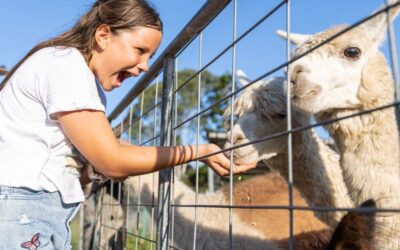Fossils found in scorched outback Queensland have drawn interest from eager archaeologists from around the world. The rare finds throw the spotlight on Australia’s unique dinosaur history. Now one of them has become the state’s newest emblem.
The Muttaburrasaurus landoni is officially a Queensland identity. It comes after securing the most votes in a state-wide public poll to choose the fossil emblem.
It was one of 12 shortlisted fossil finalists featuring dinosaurs from land and sea, early mammals, and flora. The fossils are all discoveries from across Queensland. From tiny outback towns such as Duchess, Eromanga, Hughenden, Isisford, Maxwelton, Muttaburra, Richmond, Riversleigh National Park, Talooma, Wandoan and Winton.
Premier Annastacia Palaszcsuk says more than 9,000 votes were cast for the 100-million-year-old, plant eating dinosaur, making it a clear popular choice. The Muttaburrasaurus joins nine other uniquely Queensland emblems.
“The 8-metre-long dinosaur makes a very big statement indeed,” Ms Palaszczuk says.
“Along with our official coat of arms, flag and badge, our emblems highlight the many wonders and beauty of our state. The Cooktown Orchid, koala, Great Barrier Reef Anemone fish, brolga, the sapphire, and our official colour – the mighty maroon, are all iconic symbols.”
Popularity highlights importance of dinosaur tourism in Queensland
The Premier says the popularity of Muttaburrasaurus for the State’s official fossil emblem highlights the importance of dinosaur tourism in Outback Queensland.
“I encourage Queenslanders to get acquainted with our new fossil emblem by planning a visit to to outback dinosaur destinations,” the Premier says.
A scale model of a Muttaburrasaurus is found at the Flinders Discovery Centre at Hughenden. Affectionately known as ‘Hughie’, the model is a star attraction.
Queensland’s rich palaeontology discoveries have generated world-wide interest among experts.
“Thousands of visitors travel to Outback Queensland every year to walk in the footsteps of dinosaurs and discover our rich palaeontological history,” Tourism Minister Stirling Hinchcliffe says.
“Everybody loves dinosaurs. They generate millions of dollars for the visitor economy. We want to see Outback Queensland continue to grow as Australia’s paleo capital.”
Mr Hinchcliffe says the Queensland Government is investing in a dinosaur tourism roadmap. It highlights Queensland’s best prehistoric experiences.
Muttaburrasaurus a home-grown hero
Muttaburrasaurus langdoni lived in the cretaceous period. Doug Langdon stumbled across the fossil while out mustering in Muttaburra in 1963. The humble grazier came across the 8m-long skeleton near a river bed.
It is the most complete skeleton of an Australian dinosaur.
An iconic replica skeleton stands proud within the Queensland Museum.
Queensland Museum palaeontologist Dr Scott Hocknull says Queensland’s Muttaburrasaurus is a national icon and global treasure.
“I started volunteering at the Queensland Museum as a kid 30 years ago. Muttaburrasaurus was the first dinosaur fossil I got to work on,” Dr Hocknull says.
“It inspired me then, as it will do for countless budding palaeontologists in the future.
“I used to dig dinosaurs as a kid, but now I do it for real, and I can thank Muttaburrasaurus for this.”
The next step in making Muttaburrasaurus langdoni Queensland’s state fossil emblem involves amending the Emblems of Queensland Act 2005 to confirm the dinosaur’s official status.
Servicing Brisbane, Gold Coast, Sunshine Coast and beyond, Kids on the Coast is an online guide for parents with kids events, attractions & things to do with kids, schools and education, school holiday guides, health & wellbeing for families, parenting and lifestyle news located on Gold Coast, Sunshine Coast & Brisbane, QLD.


